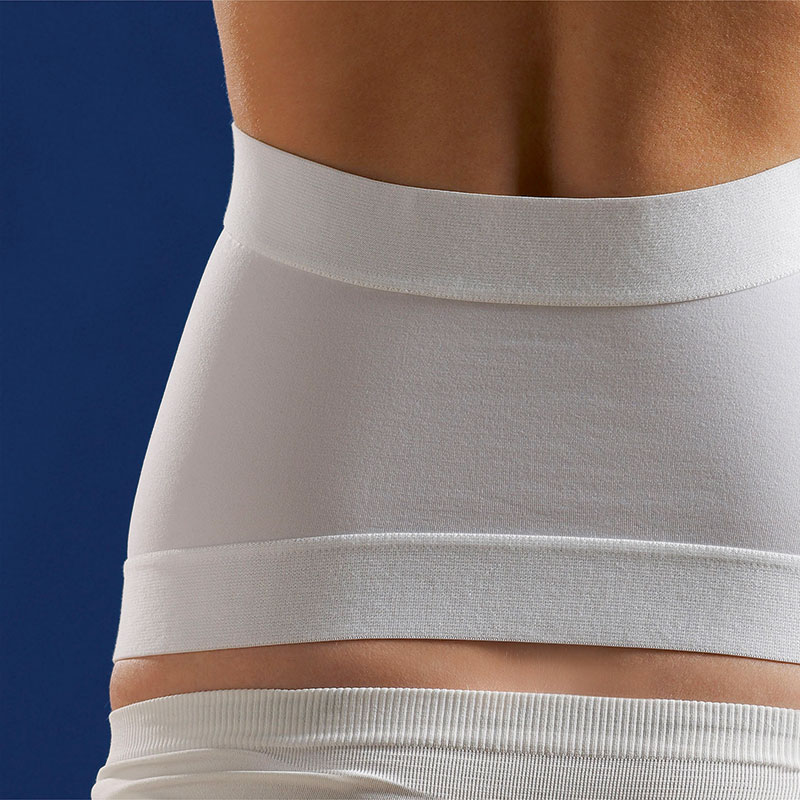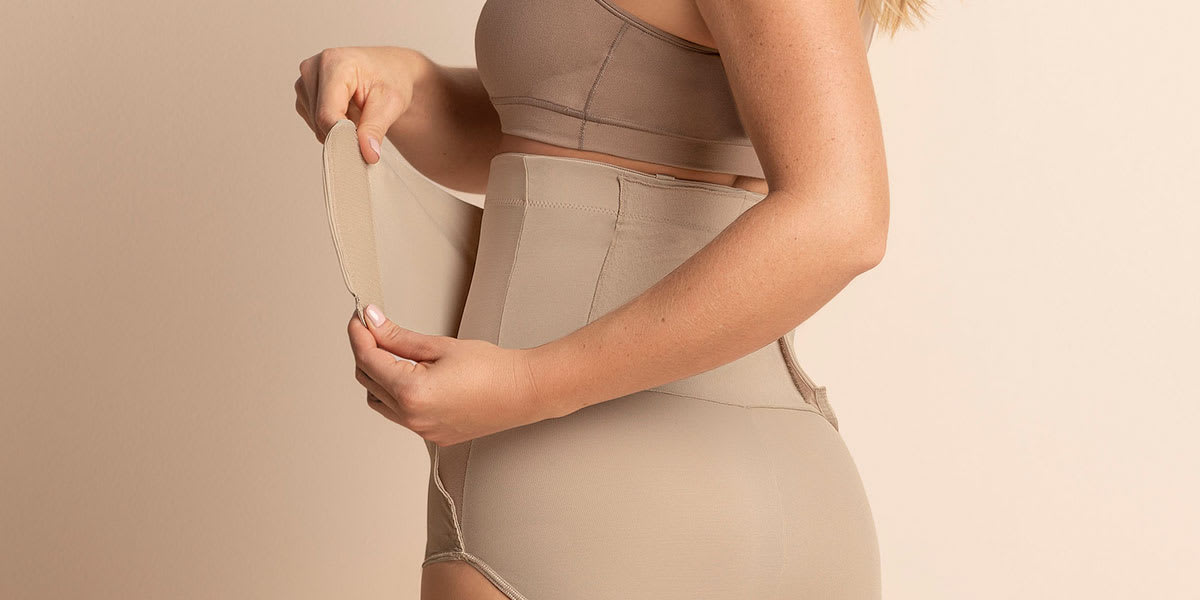Abdominal compression garments play an important role in your post-operation recovery. A compression garment applies pressure over the treatment area, preventing excess fluid accumulation and helping your body absorb any fluid accruing.
Your specialist will consider keeping your abdominal compression wear for several days or weeks following your operation if you have a tummy tuck surgery or liposuction across the belly. The tissues around the abdomen region become bleeding and swollen for several weeks after the surgery, so wear compression clothing is necessary throughout the recovery time.
Here’s a closer look at how a compression fabric features:
Abdominal Compression Garment Design
You need compression clothing designed to fit your contours and provide you with a high degree of comfort throughout your day. Look for a dress constructed from extremely sturdy components and standard breathable fabrics. Our abdominal compression wear is made of specific skin-breathing cotton. This is hugely relevant following cosmetic surgery of some sort.
The construction of the material should be molded but secure and protected enough to support the simple movement. As you can sit or stand on this garment for long periods, you have to make sure you invest in a concept made of lightweight materials that give you a decent range of motion.
Different styles of compression fabric place strain on multiple sections of the body. E.g., just the mid-section is under pressure from an abdominal belt or girdle. An abdominal bodysuit with shoulder straps will bring weight to the upper torso and enhance the balance when sitting and standing.
Benefits of Wearing an Abdominal Compression Garment
Some plastic surgeons suggest wearing an abdominal compression garment around the clock for the first few weeks following surgery to achieve optimum outcomes. This cycle, the tissues can be delicate and soft, so you ought to wear a fabric that covers the tissues and allows you to feel more relaxed every day.
Clothing with the right compression amount would not mess with proper circulation. Circulation promotes healing, so for the recommended time, you should wear your garment. Medical Z performed a clinical analysis demonstrating that the ideal compression for ideal cosmetic performance is a compression range of 17-21 mmHg. Additional advantages of having compression apparel include:
- Reduces the possibility of rips and distortions in the treated region
- May improve operating results.
- Reduces surgical swelling and bleeding (postoperative edema)
- May not hinder good circulation in and around the treated region.
- Ensures correct distribution of scar tissue following surgery
- May help to achieve more consistent aesthetic results
- Provides intense strain in challenging places
- Just one clothing is needed during the entire recovery process.
Abdominal compression fabric is built to support the body’s contours and is almost opaque under the material. Many people are willing to wear their regular clothes during the healing stage; however, you can wish to wear looser-fitting clothing during the first few weeks following surgery due to swelling.
You will need to wear garments to complement operating drains and abdominal compression after the operation while you have a tummy tuck. During your office appointment, your physician will make decisions on your postoperative process.
Using an abdominal compression cloth is essential to any patient with a tummy tuck or liposuction. If you want the best outcomes and pleasant healing time, make sure you invest in a garment that gives the help you need and suits your body perfectly.
Support Compression Garments after Plastic Surgery
If you undergo liposuction or an abdominal tuck, or both, the physician usually recommends you to wear compression clothes (unique post-op comfort clothes). This is close to what certain people term “girdles,” although several shapes, although forms – for you, the surgeon can think about those shapes.
Read more on this vital post-op liposuction or post-op tummy tuck or body lift.
When your tissues change and heal in your body, the first few weeks after a lifting, tummy tuck, or liposuction operation, a lot of excess fat and a lot of excess skin has been extracted for abdominal procedures.
Inside the treated regions, the skin and other tissues continue to respond to the procedure as they go to settle down into what will be the “new” formed body.
Take a look at: 10 Best Pregnancy Shapewear To Buy In 2021 – BestShapewears
In a Tummy Tuck procedure, a flatter or more ‘tone-tone-tone’ region of the stomach may be accomplished because extra skin and fat are eliminated, along with abdominal muscle recovery and navel repositioning. A professionally trained Cosmetic Surgeon does a right, Tummy Tuck.
The abdominal muscle strains are often surgically healed (as certain people have split or injured abdominal muscles that lead to a lasting pouch – although this may also be resolved through surgery). But before you are completely recovered, you will have a lot of swelling and body adjustments, and that’s why you have to obey the post-surgical orders specifically.
How Long Do You Wear These Compression Garments after Liposuction or Tummy Tuck?
Response: 6 to 8 weeks or more for specific procedures
While you can take them off to wash, you’ll otherwise need to wear the prescribed compression garments 24 hours a day, seven days a week – for six to eight weeks up to 12 weeks after the Operation (Plastic Surgeon Richard Barnett can send you personally detailed advice on wearing the garments).
You must remove the garments while you wash and, if you adjust your clothes, you should either remove or substitute the dress with a new one.
Tip: You might want to buy three or four packing clothes so that you can rotate with them, and you don’t have to wash so frequently.
Some surgeons think wearing the clothing 10-12 hours a day might be appropriate, but ask Mr. Barnett why he offers you longer wearing guidance-and show him his before and after pictures to see his excellent performance.
The compression apparel that you are required to wear can be manufactured in numerous sizes or labels.
You might be required to wear a whole-body compression jacket, or one designed for the belly only, or one covering your thighs across your upper abdomen (some are full-body, others have suspensions on top to help hold the item in position-and others finish just below the bra area).
These help surgical clothes essentially serve as a solid brace – you know they’re ‘gathered around’ and, amid occasional discomforts that they have to carry for several weeks, most of the patients say they know more protected and more comfortable to walk about – not overly, of course – after surgery.




Leave a Reply